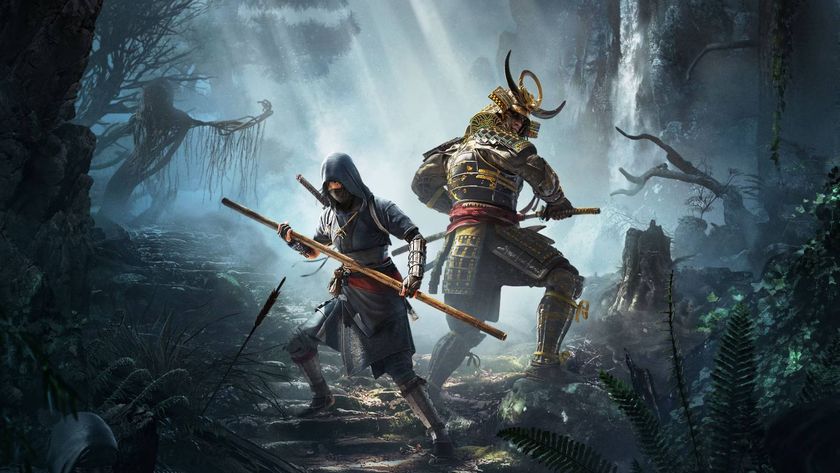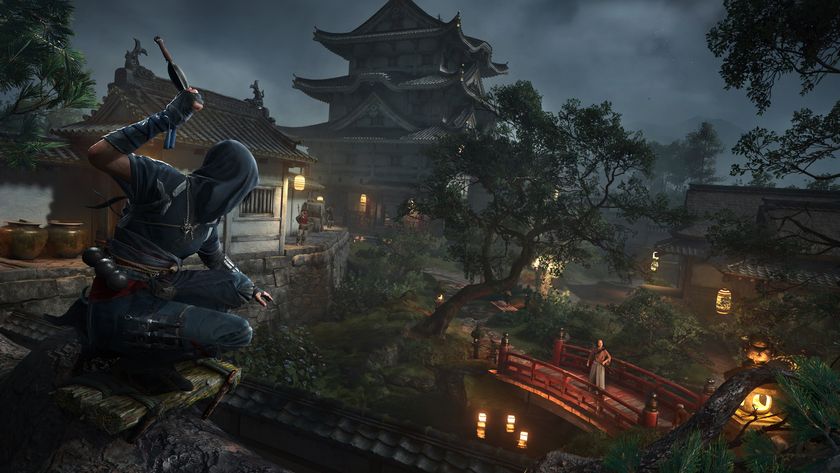High Horse: Quit saying Assassins Creed III wont have cities
Colonial America was more developed than the Internet gives it credit for. Here's some stuff we can look forward to climbing

High Horse is a rotating opinion column in which GamesRadar editors and guest writers are invited to express their personal thoughts on games, the people who play them and the industry at large.
Well, the cat’s finally out of the bag regarding Assassin's Creed III. Instead of the modern-day adventure we once predicted, the next historically tinged adventure will take us back to the days of the American Revolution. Playing as a half-Mohawk, half-British Assassin named Connor, we’ll work alongside the likes of George Washington and Benjamin Franklin, continuing the secret Templar-Assassin war under the guise of fighting for independence.

Above: OMG OMG OMG OMG OMG OMG OMG OMG OMG OMG OMG
Personally, I couldn’t be more excited. Public-school education and political revisionism here in the States have given most of us a rather dry, straightforward idea of the Revolution as the story of a bunch of scrappy, fife-playing farmers and statesmen fighting a guerrilla war against faceless, tax-happy Redcoats, but the real story’s much more complicated – and much more interesting. Secret societies, conflicting loyalties, European adventurers, shady financiers, Native tribes and giants of political thought all played significant roles in the conflict (most of which get downplayed or omitted from school textbooks), making the Revolutionary period a rich, intrigue-filled setting that – outside of maybe a few RTSes – hasn’t really been explored by games at all.
And yet when confronted with all this promise, gamers, as we so often do, complain. “Not another game set in America,” groan endless comment and forum threads, “America is for stupids. We want Victorian London/feudal Japan/the French Revolution/ancient China/the Jurassic Period!”

Above: "Oh, and what's that, a tomahawk shaped like the Assassin emblem? Pfffft. Obviously a katana would be far superior to such a primitive weapon"
Fair enough; I’d like to see those too, eventually. But the most baffling, widespread complaint I’ve read by far is that colonial America is a poor choice for a setting because it had “no cities,” and therefore nothing substantial to climb. It's a claim I've seen made in forums, in comments, on blogs and even in professional outlets. Even Forbes contributor Erik Kain wrote that “The American colonial countryside had essentially no cities at all [emphasis mine], let alone anything remotely as grand as Constantinople.”
Sign up to the 12DOVE Newsletter
Weekly digests, tales from the communities you love, and more
Statements like the above are, not to mince words, absurd horseshit. Eighteenth-century America might not have boasted any cosmopolitan centers of art and culture, but it sure as hell had cities. Particularly in New England, where the bulk of Assassin’s Creed III will be set. Several of them even played key roles in the Revolution; where would the First Continental Congress have met, if not for Philadelphia? Boston was the site of both the Battle of Bunker Hill and Paul Revere’s famous (and possibly apocryphal) ride, and New York City – specifically Brooklyn – played host to the single largest battle of the war.
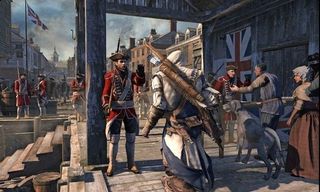
Above: Seriously, what does this look like to you, if not a city?
These weren’t recent settlements, either, at least not by American standards; New York and Boston (which we now know will be the settings for ACIII) had been inhabited and built up for nearly 150 years by the time the Revolution broke out. Sure, they were still small by European standards, boasting populations that hovered around the 20,000 mark. And they weren’t really known for ambitious architecture, given that structures taller than three stories were fairly rare. But that doesn’t mean that they didn’t boast ample opportunities for climbing up walls and leaping off rooftops.
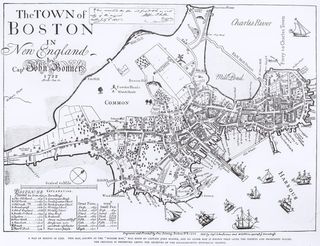
Above: Does it look any more like a city NOW?
Visit the historical sites of Boston and New York, and you’ll find a lot of squat, utilitarian buildings, true – but you’ll also find structures like Boston’s Old North Church, which was used to warn the Charlestown militia of impending British attack (and which was immortalized as part of Paul Revere’s ride). During the Revolution, the church sported a steeple that was 191 feet tall; not as impressive as some of the series’ other structures, maybe (Giotto’s Campanile, the soaring bell tower seen in Assassin’s Creed II’s version of Florence, stands at about 278 feet in real life), but still a potentially satisfying climb.
That’s not even the half of it; Boston’s crammed full of colonial buildings that present unique and interesting climbing opportunities, including Faneuil Hall, King’s Chapel, the Old South Meeting House and the Old State House. Again, these structures aren’t quite on the same level as Rome’s Pantheon or the Doge’s Palace in Venice, but visit them in person and you’ll see they’re still nothing to sneeze at.
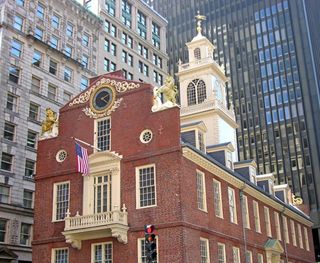
Above: Boston's Old State House. C'mon, you know you want to get up on this thing
Then there’s New York; even before it was the sprawling metropolis we know today, New York was a bustling port city and a center of colonial commerce. It would have been a fairly densely populated place, although unlike Boston, most of its more impressive landmarks weren’t built until the 19th century. Still, we’ll at least be able to scale St. Paul’s Chapel and the nearby Federal Hall, both of which are impressive structures in their own right.
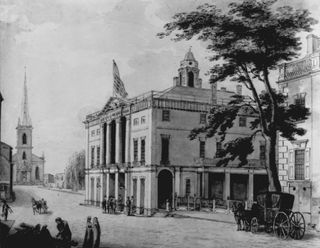
Above: Federal Hall as it was in 1798, centuries before it became the site of the Raiden-Solidus fight at the end of Metal Gear Solid 2
Going by the information that’s recently been leaked, we know that this will be a different kind of Assassin’s Creed; about a third of the game will be made up of a wilderness that’s larger than AC Brotherhood’s version of Rome, with climbable trees standing in for buildings. But that doesn’t mean that the series is going purely rural, and to assert that it is because “there were no American cities back then” is a ridiculous argument.
Of course, it’s one thing for history buffs like me to cream our jeans over the thought of exploring 18th-century New England. I can't expect everyone to share my enthusiasm. But consider that – while the series has had its ups and downs – the settings chosen by the developers of Assassin’s Creed have been one of the most consistently impressive things about the franchise. If they think the American Revolution is a good backdrop for their game, I’m inclined to trust that they know what they’re doing – and that, yes, they’ve picked an area, and an era, with plenty of interesting things to climb.
